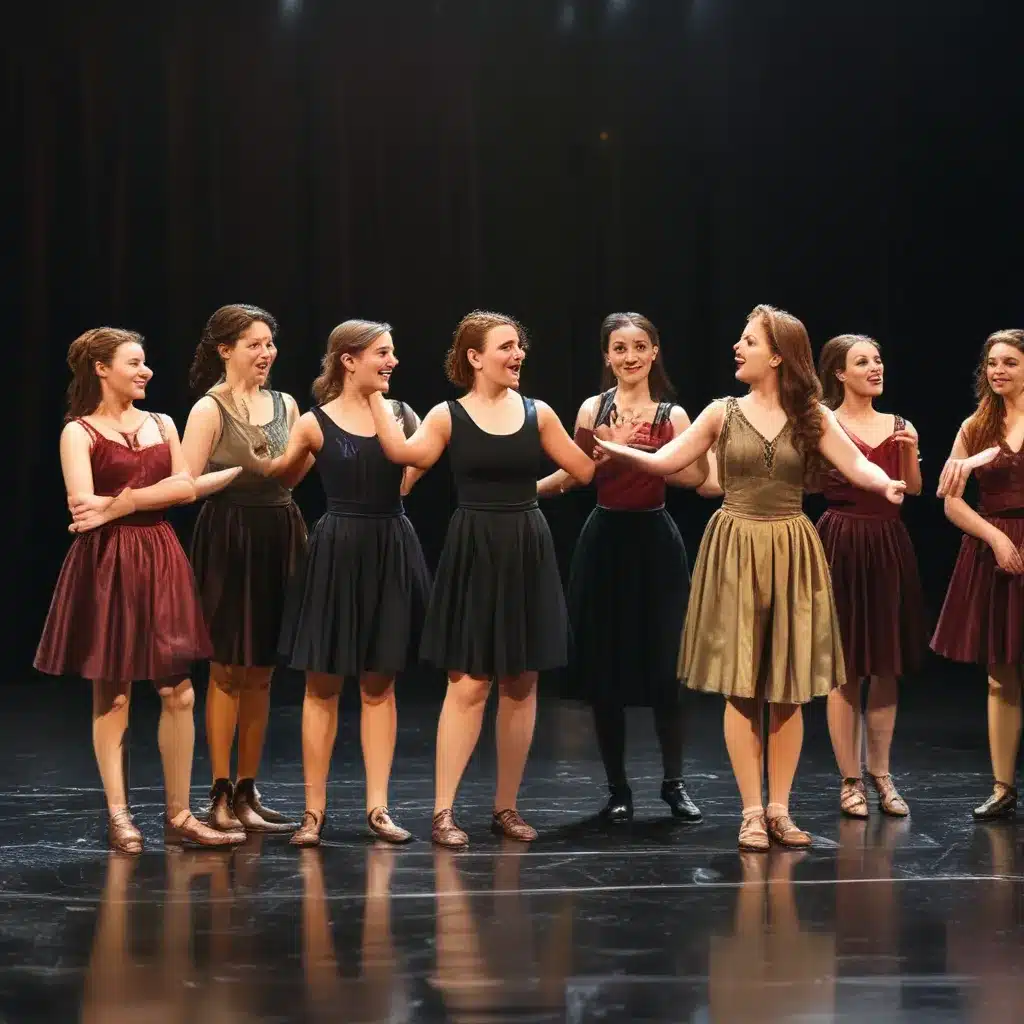
From Dreaming to the Big Stage: A Journey Through the Eyes of Musical Theater Center Students
As I sat in the dimly lit rehearsal space of the Musical Theater Center, the room buzzed with a palpable energy. My eyes scanned the scene before me – students huddled together, their voices rising and falling as they ran through lines and melodies, while the director meticulously guided them through each nuanced movement. It was a glimpse into the world of aspiring performers, a world I was eager to explore.
Gina Gionfriddo, a renowned playwright, once said, “The theater is a sacred space, a place of worship and ceremony.” And as I immersed myself in the rehearsals at the Musical Theater Center, I couldn’t help but feel the truth in her words. These students were not merely reciting lines or hitting notes; they were pouring their hearts into their craft, each performance a testament to their dedication and passion.
Translating the Score: The Foundation of Musical Theater
The journey of a musical theater student often begins with a score, a complex web of notes, rhythms, and lyrics that must be meticulously unraveled and understood. As Alex Harrelson, who played the White Rabbit and Mad Hatter in the center’s production of “ALICE,” explained, “Learning a new role can be a lengthy, sometimes tedious process. Oftentimes in opera, this process starts with translating a score.”
For these students, the process of mastering a role is a multilayered endeavor. Some, like Matthew Tang, who portrayed the March Hare, start by “speaking a work’s words and rhythms, only adding in the notes later.” Others, like Natalia Turchin Champagne, who played Alice, “write out the music and text by hand to memorize them.”
The dedication and attention to detail required are truly awe-inspiring. As the Musical Theater Center’s voice director, Robert Breault, explained, “It’s not fun when you show up to your first staging rehearsal and you don’t know your music.” These students understand that the foundation of a powerful performance lies in their ability to seamlessly weave together the score’s intricate elements.
Bringing Characters to Life: The Art of Staging and Choreography
With the music and lyrics mastered, the next step in the journey is the transformation from student to character. This is where the true magic of musical theater emerges, as the performers breathe life into their roles through staging and choreography.
I witnessed this process firsthand during the rehearsals for the center’s production of “ALICE.” As described in the Daily Utah Chronicle article, the rehearsals began with “cleaning up some choreography” and gradually evolved into a “beautiful full show.” The cast members moved with purpose, their bodies in sync as they navigated the intricate web of stage directions and blocking.
The collaborative nature of this process was truly inspiring. Thia Harris, who played the Duchess, even took the lead in a team-building activity, guiding the entire cast and crew through a moment of shared gratitude and support. “I don’t have words to express the gratitude that we all do support each other,” Champagne reflected. “You always have people who are on the same pace with you and do support you, which is important.”
The Crescendo: Dress Rehearsals and Opening Night
As the opening night of “ALICE” approached, the excitement and anticipation grew palpable. The dress rehearsals were a testament to the countless hours of hard work and dedication poured into the production. The cast members glided across the stage, their costumes and makeup transforming them into the beloved characters of Lewis Carroll’s classic tale.
The directors, Amy Scurria and Zane Corriher, watched with pride as their vision unfolded before their eyes. “It really comes to life when this whole team comes together, and that’s what I love about it,” Scurria shared. Corriher likened the experience to “Dorothy stepping out into Oz and it’s the Technicolor, and then other people interpret it and put on a performance, and it’s like she walks through another door and there’s even more colors and textures.”
Finally, the curtain rose, and the audience was transported to the whimsical world of Wonderland. As I sat in the audience, I witnessed the students’ characters come alive, their voices soaring and their movements captivating. The technical elements – the lighting, the sound, the set design – all seamlessly woven together to create a truly immersive theatrical experience.
The Curtain Call: Celebrating the Triumph of Musical Theater Students
When the final notes faded and the curtain fell, the audience erupted in thunderous applause. The cast members, beaming with pride, took their well-deserved bows, each one a testament to the dedication and passion that had brought this production to life.
As Breault praised the cast’s performance, his words captured the essence of the Musical Theater Center’s mission: “Clap for yourselves one more time.” These students were not merely performers; they were artists, craftspeople, and storytellers, each one leaving an indelible mark on the hearts and minds of the audience.
In the quiet moments after the show, I couldn’t help but reflect on the journey I had witnessed – from the painstaking translation of the score to the breathtaking final performance. It was a testament to the power of the human spirit, to the transformative nature of the arts, and to the unwavering dedication of these young artists.
As I made my way out of the theater, I couldn’t help but feel a sense of awe and inspiration. The curtain may have fallen, but the stories of the Musical Theater Center students would continue to reverberate, inspiring others to pursue their own dreams and passions. It was a humbling reminder that the true power of the stage lies not in the lights or the sets, but in the unwavering spirit of those who dare to take the leap and share their stories with the world.

